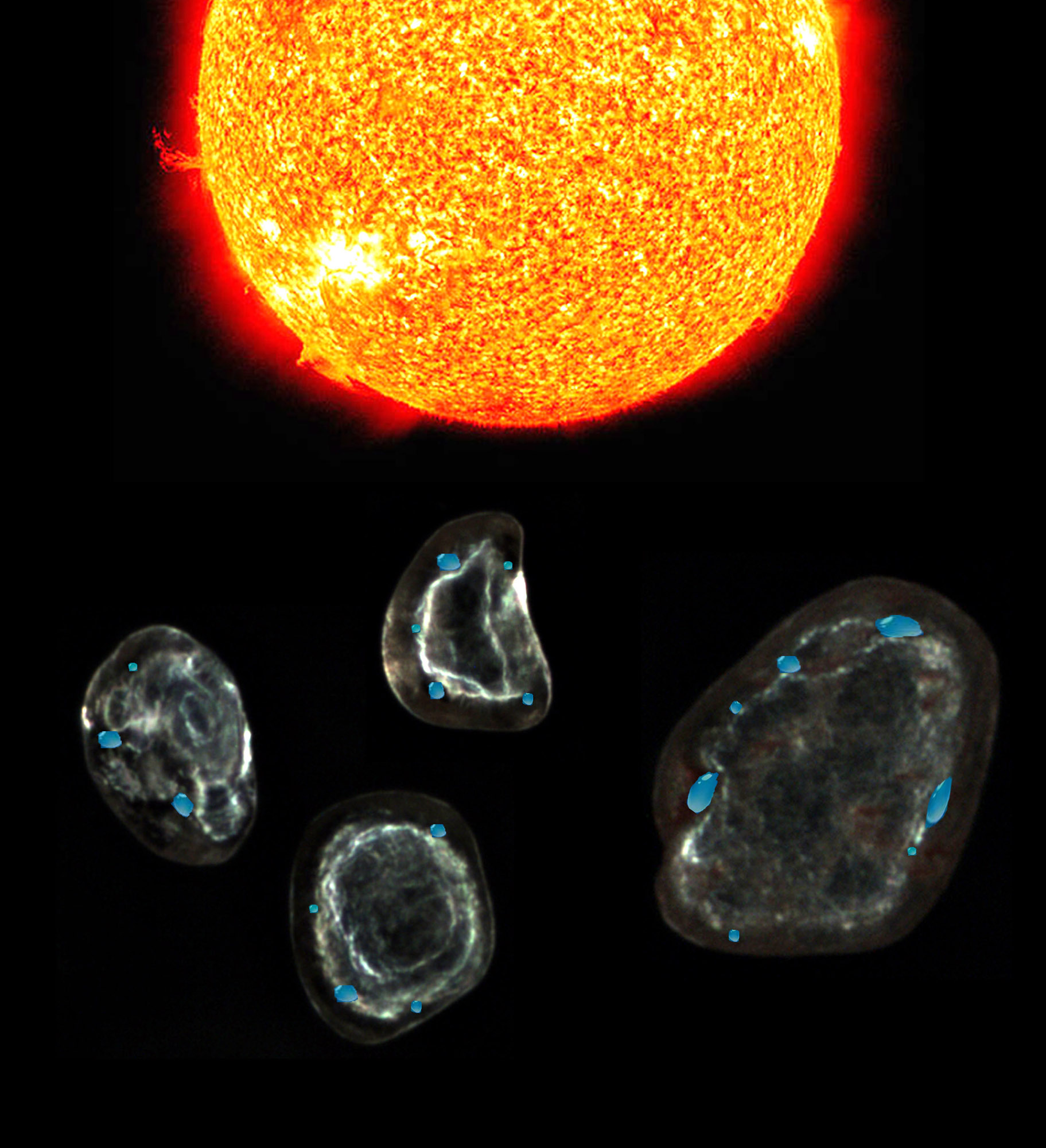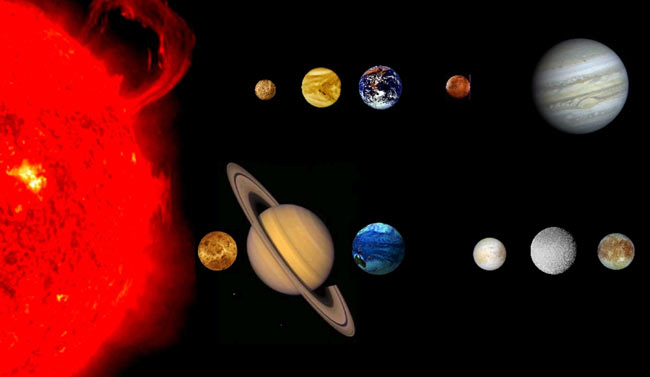Solar Wind Creates Water in Star Dust, Implications for Life

Solar wind can form water on interplanetary dust, potentially adding to the primordial soup that gave rise to life on Earth, scientists say.
On Earth, there is life virtually everywhere water is found. Past research suggests much of this water may have come to Earth from comets raining down on the planet. But scientists have suggested another source of water in the airless void of space — the continuous flow of charged particles from the sun, a stream known as the solar wind.
This wind consists primarily of protons, the positively charged nuclei of hydrogen atoms. When these particles slam against oxygen-laden rocks — for instance, minerals known as silicates — they could in principle form water molecules.
The creation of water via the solar wind could help explain the presence of water on the moon and on asteroids. The wind could also have formed water on interplanetary dust, which, in turn, could have rained water down on Earth and other rocky planets.
"Interplanetary dust continually lands on the Earth and other solar system bodies," said study co-author Hope Ishii, an astromaterials scientist at the University of Hawaii. In the present day, Earth receives about 30,000 to 40,000 tons of interplanetary dust per year. This amount is thought to have been considerably higher when the Earth was young, because there was more interplanetary dust drifting through the solar system.
Intriguingly, interplanetary dust is also known to possess more carbon-laden organic molecules than any other known class of meteoritic material. Such dust "may well have acted as a continuous rainfall of little reaction vessels containing both the water and organics needed for the eventual origin of life," Ishii said.
However, scientists have debated for decades whether or not the solar wind could generate water on the rims or surface layers of rocks in space.
Get the Space.com Newsletter
Breaking space news, the latest updates on rocket launches, skywatching events and more!
"The controversy has lasted such a long time because, until now, analytical techniques were unable to confirm the presence of water, because the amount of water produced is small and it is localized in very thin rims on the surfaces of silicate minerals," Ishii said. "It was also a challenge to confirm by studies of surface soils from the moon, because water produced there is continually outgassed into space."
Now Ishii and her colleagues may have solved this controversy by detecting water sealed within the surface layers of interplanetary dust.
"We have shown that solar wind production of water actually happens," Ishii told SPACE.com.
The scientists analyzed interplanetary dust collected in the dry stratosphere at an altitude of about 12 miles (20 kilometers). Using flags coated in silicone oil mounted on the wing pylons of NASA aircraft, researchers gathered these particles as they rained down from the sky.
Ishii and colleagues used a state-of-the-art transmission aberration-corrected electron microscope to analyze the surface layers of this interplanetary dust. This strategy helped them look for water inside these particles on the scale of nanometers, or billionths of a meter. (For comparison, a human hair is on average about 100,000 nanometers wide.)
"We were originally looking for solar-wind–implanted helium in the rims on minerals in interplanetary dust particles, and stumbled onto water," Ishii said.
The scientists detected water in the rims of interplanetary dust particles normally thought of as lacking water.
"We have shown for the first time that water and organics are delivered together," Ishii said.

These findings could have implications for distant planets and the prospect of alien life.
"The process of solar-wind hydrogen ions reacting with oxygen in silicate minerals is ubiquitous throughout our solar system, and we can expect that any other star producing a stellar wind with hydrogen ions will be irradiating silicate minerals in dust and on airless bodies in its vicinity, also," Ishii said. "Thus, solar-wind–produced water in dust containing organics can be expected to reach other planets in systems similar to ours."
The researchers noted that estimating how much water is or was deposited on Earth because of this effect remains difficult. This is because scientists do not know precisely how much of the surface area of interplanetary dust particles is exposed to the solar wind or how long they are exposed to it. The brightness of the early sun also remains unknown, as does the amount of interplanetary dust that fell to Earth in the past. Both these factors would influence how much of this water Earth received.
"In no way do we suggest the amount of water from solar wind-irradiated dust was sufficient to form oceans," Ishii said. Still, "because the rainfall of interplanetary dust has been continuous, the cumulative amount of solar-wind–produced water may well have been significant."
The scientists detailed their findings online Jan. 20 in the journal Proceedings of the National Academy of Sciences.
Follow us @Spacedotcom, Facebook and Google+. Original article on SPACE.com.
Join our Space Forums to keep talking space on the latest missions, night sky and more! And if you have a news tip, correction or comment, let us know at: community@space.com.

Charles Q. Choi is a contributing writer for Space.com and Live Science. He covers all things human origins and astronomy as well as physics, animals and general science topics. Charles has a Master of Arts degree from the University of Missouri-Columbia, School of Journalism and a Bachelor of Arts degree from the University of South Florida. Charles has visited every continent on Earth, drinking rancid yak butter tea in Lhasa, snorkeling with sea lions in the Galapagos and even climbing an iceberg in Antarctica. Visit him at http://www.sciwriter.us









